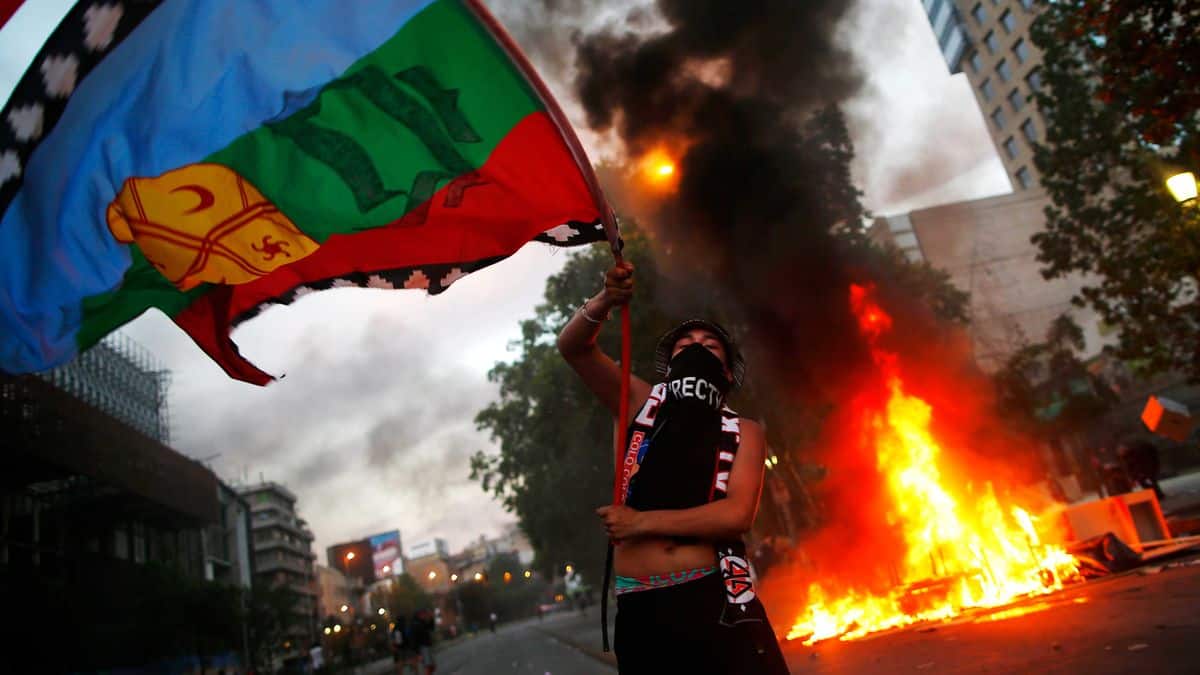A Wave of Protests in Latin America

The wave of protests in Latin America is an expression of today’s global civil unrest by working people, the lower class, youth, the poor and the marginalized strata of the middle class. There are two categories of demands: protests against violations of constitutional standards and election fraud (Bolivia); demands to replace an obsolete Constitution (Chile); and protests against actions by corrupt authorities who do not react to mounting contradictions and conflicts. But the main reason for the protests, which has consolidated civil society in Ecuador, Chile and Argentina in the demand for change, was the exacerbation of socio-economic problems including rampant unemployment, cost-of-living increases, lack of access to healthcare and education, and a steady decline in living standards. So, basically, the main reason behind the current protests is social inequality that is growing at an unprecedented rate and has turned into a global problem by the beginning of the 21st century.
Large social protests in Ecuador, an unprecedented protest movement in Chile, and the victory of the Alberto Fernandez/Christina Fernandez de Kirchner presidential tandem in Argentine, which signified the return of center-left politicians, are links in the same chain that testify to the radical changes in the political, and most importantly, socio-psychological climate in Latin America.
In Ecuador and Chile the actions of the authorities triggered the protests of the masses, whereas in Argentine the policy of President Mauricio Macri encountered a reaction in the form of a constitutional, democratic, peaceful and non-violent presidential election procedure.
The reaction of the Brazilian leaders to events in Chile, which ultra-right President Jair Bolsonaro described as “terrorism” and “left-wing provocation,” is indicative. The army was ordered to immediately suppress any potential riot by force. The President’s son, Eduardo Bolsonaro, suggested repeating history through the adoption of “new Institutional Act No.5.” This act was one of the most odious instruments of military dictatorship rule in Brazil in 1964−1985, and one that legalized torture. Apologies for what he described as an “accidental slip of the tongue” only convinced the public of the poorly concealed intentions of the current Brazilian regime with regard to methods for responding to potential social unrest. At the same time the events in Chile have caused serious concern among analysts in Brazil, who considered them a forbidding signal to their own rulers: the ultra-liberal economic agenda plus the degradation of social welfare since the previous right conservative cabinet, aggravated by the current reduction in the social and labor rights of the working people and pensioners; and the gap between the rich and the poor that has grown to the score of 40 points – all this creates potential fuel for social unrest.
Some feel that the president of Chile, Sebastian Pinera, and Mauricio Macri of Argentina had the grounds to justify their respective market reforms. They wanted to use their opportunities to revive the economy and accelerate economic growth. This may be true but the improvement of macroeconomic indicators and the higher living standards of some strata was scant consolation for those whose position was implacably deteriorating and who could not bear the growing luxury of the top circles against the backdrop of their own ruin.
Under these conditions, even a minor increase in social costs (a small increase in the gas tax in Ecuador and a minor increase in the price of metro tickets in Chile), which might have caused temporary discontent in the past, became a detonator of powerful social protests that shook the very foundations of the relevant political regimes. Unfortunately, peaceful and legal protests were accompanied by pogroms and acts of vandalism.
We believe old truths are being confirmed once again in Latin America: Latin American societies have a strongly negative response to the enormous social costs of neoliberalism, which mean the curtailment of social programs and deepening social inequality as a result. In the late 1990s, it was the protest against neoliberalism that led to the left-wing turn and implementation of large-scale social programs. Today we are seeing the same protests but in new conditions.
In the 2000s, a favorable foreign economic environment allowed center-left politicians to amass substantial financial resources and spend them on social reforms, which was a major condition for progress. However, these resources do not exist in the late teens of the 21st century for various reasons. Even after a return to power, center-left forces will face the same problems that resulted in the removal of their predecessors – right-wing conservatives. Leftist politicians will have to find a way out of multi-factor crises, to quickly improve the dramatic social plight of the continuously marginalized middle and lower classes and to counter rising inflation.
Will center-left politicians manage to prevent a social disaster without reliable sources of funding that could be used for carrying out reforms and, by contrast, will the right forces manage to alleviate social tensions by pursuing a flexible social policy? For now, there is no positive answer to this question. But one thing is clear: today’s regimes will only stay in power if they prove a willingness to meet the demands of society. At this point, the threat of being removed from power does not exist in any Latin American country, but if the authorities ignore the lawful demands of the masses that lead miserable existences, the accumulation of these conflicts without any outlet could turn the Latin American countries into an arena of serious political upheaval.





